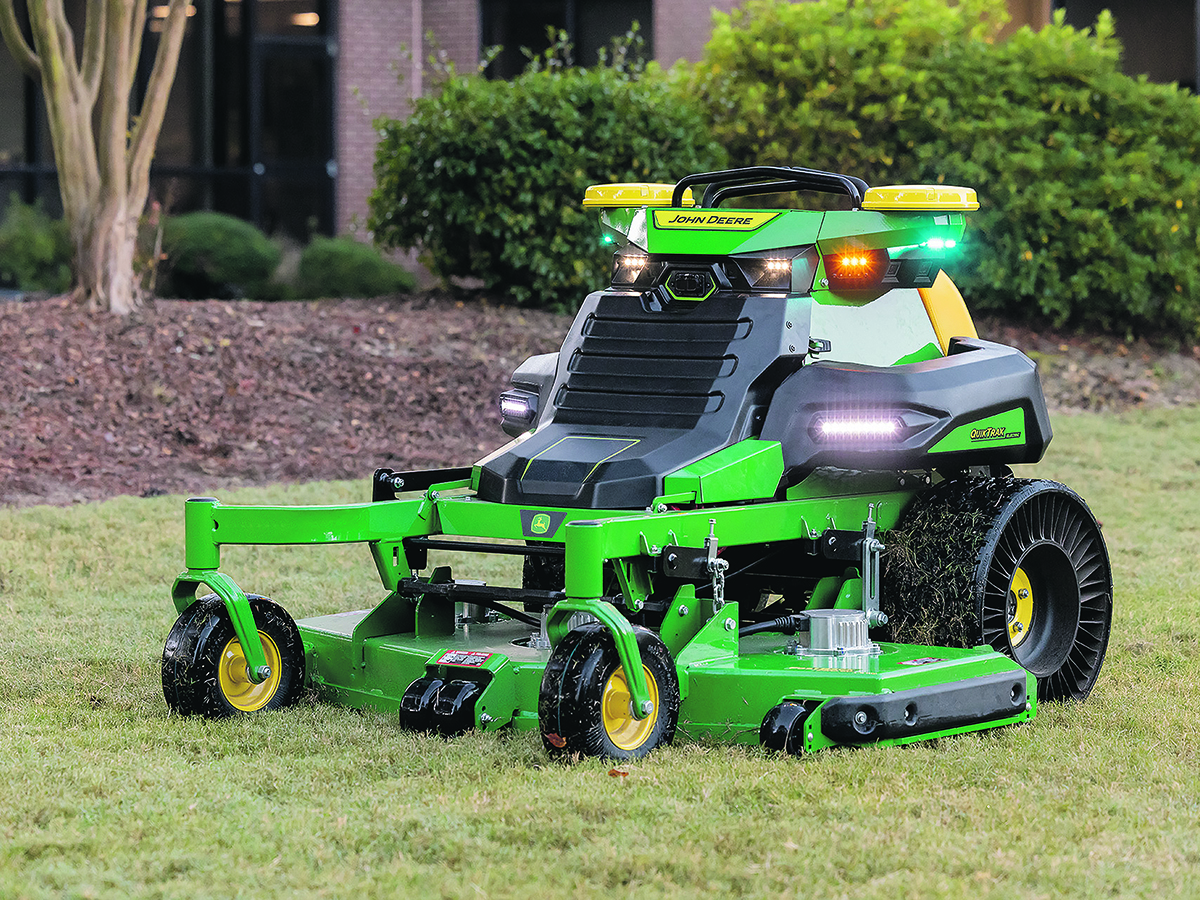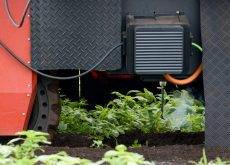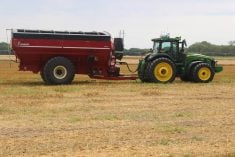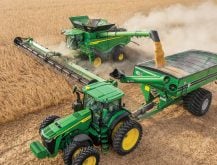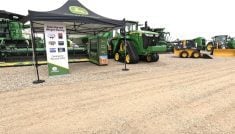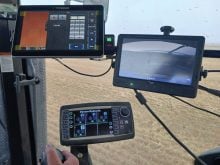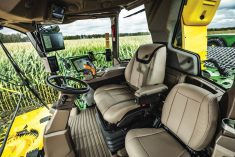Four new products with second generation autonomy perception systems debuts at the Consumer Electronics Show
John Deere used January’s Consumer Electronics Show in Las Vegas to introduce a new, second generation perception system that will allow autonomous operation of more of its machines.
“Today we’re going to take four giant leaps forward in John Deere’s autonomy journey,” Jahmy Hindman, senior vice-president and chief technology officer, said during a news conference at the show.
“First let me share three key reasons why we’re on this path.
Read Also

Crop quality looks good this year across Prairies
Crop quality looks real good this year, with the exception of durum.
“First, one challenge they (JD customers) face is limited labour availability. This is a persistent challenge we are intent on solving. We believe autonomy can be a part of that solution.
“Second, the pace of our autonomy solutions is accelerating. We’re taking our tech stack, which was nearly three decades in the making, and extending it to more of our machines.
“Third, when we talk about autonomy, we mean full autonomy. Nobody is in the machine. Using the John Deere Operations Centre app on a smartphone, they can interact with the machine, monitor the machine’s activity and see performance data.”
Deere’s second generation perception system will now be available for installation in four additional machines to allow them to operate autonomously. Those include the very high-horsepower 9RX tractors along with the orchard version 5ML models and the company’s 460 off-road articulated dump truck. As well, there is a new fully electric, autonomous zero-turn mower.
The new system will also be retrofit table onto a select group of other existing Deere machines.
“We want to make autonomy available to industries that can benefit from it,” added Hindman.
“Not only are we adding autonomy to new machines, but our customers can add autonomy to many existing Deere machines.”
Deere’s first generation perception system for autonomous operation, which debuted on the 8R tractor line for tillage operations, used a pair of stereo cameras to give the controlling computer depth perception. However, they could provide only a limited range of vision. Factors such as vibration from the tractor also limited their range.
The second generation system uses many more cameras paired with Lidar, which can provide enhanced depth perception capability.

“Mechanical tolerances, vibration and temperature swings limit how far you can sense at some distance accurately,” said Willy Pell, chief executive officer of Deere’s Blue River Technology subsidiary.
“To solve this, we created what we’re calling camera arrays. Instead of two cameras overlapping, we have many cameras overlapping.
“This new kit, which can be retrofitted onto existing large tractors, will allow it to do every job a tractor does on the farm. We’re building a tech stack that has data and is modular and we’re spreading it across all the machines we serve.
“We started with the slowest, easiest job on the farm, which is fall tillage with a chisel plow. Now we’re excited to spread our wings beyond our initial use case.”
Because the new system sees a larger area around the machine, it allows for up to 40 per cent faster travel speeds and wider implement working widths.
He added that engineers are continuing to “train” the system to identify a wide variety of factors an autonomous machine could encounter as it works. The more situations the system can identity, the better it will perform in the field.

Encountering something the tractor’s system isn’t familiar with can stop it unnecessarily. As an example, he cited the example of a moth flying in front of the camera during night operations.
“When we first started training systems on these images, we didn’t have insects in mind. But when running machines at night, a small moth would bring our 40,000 pound machine to a halt. It was a software bug in all senses of the word.”
In addition to the autonomous system, Deere also revealed it has developed a concept battery electric tractor comparable in size to its 5M Series models. It is currently in field trials in the United States.




